Ambient
Showing 26901–26950 of 55601 results
-
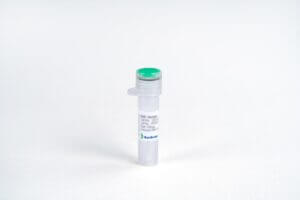
IGF-I, Mouse
$43.13 Add to cart View Product DetailsInsulin-like Growth Factor I (IGF-I) is a single chain 7 kDa growth-promoting polypeptide originally identified as somatomedin-c. It belongs to the IGF family of peptides, which also includes IGF-II and insulin. The gene expression of IGF-I is mainly regulated by Growth Hormone, and IGF-I executes its functions via signaling through transmembrane tyrosine receptors (IGF Receptors). Most circulating IFG-I is associated with the IGF Binding Protein 3 (IGFBP-3), and the IGFBPs may inhibit the actions of IGFs by competing against the IGF Receptors. IGF-I is active in post-natal and adult animals, and is crucial for somatic growth, as IGF-I null mice show marked retardation in utero. IGF-I is involved in carcinogenesis, and related to prostate cancer as well.
-

IGF-I, Mouse
$86.25 Add to cart View Product DetailsInsulin-like Growth Factor I (IGF-I) is a single chain 7 kDa growth-promoting polypeptide originally identified as somatomedin-c. It belongs to the IGF family of peptides, which also includes IGF-II and insulin. The gene expression of IGF-I is mainly regulated by Growth Hormone, and IGF-I executes its functions via signaling through transmembrane tyrosine receptors (IGF Receptors). Most circulating IFG-I is associated with the IGF Binding Protein 3 (IGFBP-3), and the IGFBPs may inhibit the actions of IGFs by competing against the IGF Receptors. IGF-I is active in post-natal and adult animals, and is crucial for somatic growth, as IGF-I null mice show marked retardation in utero. IGF-I is involved in carcinogenesis, and related to prostate cancer as well.
-
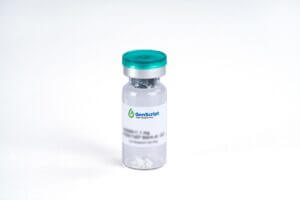
IGF-I, Rat
$612.38 Add to cart View Product DetailsInsulin-like Growth Factor I (IGF-I) is a single chain 7 kDa growth-promoting polypeptide originally identified as somatomedin-c. It belongs to the IGF family of peptides, which also includes IGF-II and insulin. The gene expression of IGF-I is mainly regulated by Growth Hormone, and IGF-I executes its functions via signaling through transmembrane tyrosine receptors (IGF Receptors). Most circulating IFG-I is associated with the IGF Binding Protein 3 (IGFBP-3), and the IGFBPs may inhibit the actions of IGFs by competing against the IGF Receptors. IGF-I is active in post-natal and adult animals, and is crucial for somatic growth, as IGF-I null mice show marked retardation in utero. IGF-I is involved in the carcinogenesis, and related to the prostate cancer as well.
-

IGF-I, Rat
$36.23 Add to cart View Product DetailsInsulin-like Growth Factor I (IGF-I) is a single chain 7 kDa growth-promoting polypeptide originally identified as somatomedin-c. It belongs to the IGF family of peptides, which also includes IGF-II and insulin. The gene expression of IGF-I is mainly regulated by Growth Hormone, and IGF-I executes its functions via signaling through transmembrane tyrosine receptors (IGF Receptors). Most circulating IFG-I is associated with the IGF Binding Protein 3 (IGFBP-3), and the IGFBPs may inhibit the actions of IGFs by competing against the IGF Receptors. IGF-I is active in post-natal and adult animals, and is crucial for somatic growth, as IGF-I null mice show marked retardation in utero. IGF-I is involved in the carcinogenesis, and related to the prostate cancer as well.
-

IGF-I, Rat
$76.76 Add to cart View Product DetailsInsulin-like Growth Factor I (IGF-I) is a single chain 7 kDa growth-promoting polypeptide originally identified as somatomedin-c. It belongs to the IGF family of peptides, which also includes IGF-II and insulin. The gene expression of IGF-I is mainly regulated by Growth Hormone, and IGF-I executes its functions via signaling through transmembrane tyrosine receptors (IGF Receptors). Most circulating IFG-I is associated with the IGF Binding Protein 3 (IGFBP-3), and the IGFBPs may inhibit the actions of IGFs by competing against the IGF Receptors. IGF-I is active in post-natal and adult animals, and is crucial for somatic growth, as IGF-I null mice show marked retardation in utero. IGF-I is involved in the carcinogenesis, and related to the prostate cancer as well.
-

IGF-I, Salmon
$1,138.50 Add to cart View Product DetailsInsulin-like growth factor 1 (IGF-1), also called Somatomedin, is a hormone similar in molecular structure to insulin but has a much higher growth-promoting activity. IGF-1 consists of 70 amino acids in a single chain with three intramolecular disulfide bridges. IGF-1 may be a physiological regulator of [1-14C]-2-deoxy-D-glucose (5DG) transport and glycogen synthesis in osteoblasts. It is able to stimulate glucose transport in bone-derived osteoblastic (PyMS) cells and is effective at much lower concentrations than insulin, not only regarding glycogen and DNA synthesis but also with regard to enhancing glucose uptake. It may also play a role in synapse maturation.
-

IGF-I, Salmon
$63.83 Add to cart View Product DetailsInsulin-like growth factor 1 (IGF-1), also called Somatomedin, is a hormone similar in molecular structure to insulin but has a much higher growth-promoting activity. IGF-1 consists of 70 amino acids in a single chain with three intramolecular disulfide bridges. IGF-1 may be a physiological regulator of [1-14C]-2-deoxy-D-glucose (5DG) transport and glycogen synthesis in osteoblasts. It is able to stimulate glucose transport in bone-derived osteoblastic (PyMS) cells and is effective at much lower concentrations than insulin, not only regarding glycogen and DNA synthesis but also with regard to enhancing glucose uptake. It may also play a role in synapse maturation.
-

IGF-I, Salmon
$232.88 Add to cart View Product DetailsInsulin-like growth factor 1 (IGF-1), also called Somatomedin, is a hormone similar in molecular structure to insulin but has a much higher growth-promoting activity. IGF-1 consists of 70 amino acids in a single chain with three intramolecular disulfide bridges. IGF-1 may be a physiological regulator of [1-14C]-2-deoxy-D-glucose (5DG) transport and glycogen synthesis in osteoblasts. It is able to stimulate glucose transport in bone-derived osteoblastic (PyMS) cells and is effective at much lower concentrations than insulin, not only regarding glycogen and DNA synthesis but also with regard to enhancing glucose uptake. It may also play a role in synapse maturation.
-

IGF-II, Human
$560.63 Add to cart View Product DetailsInsulin-like Growth Factor II (IGF-II) is a single chain 7 kDa polypeptide, and shares a high degree of homology with insulin. During circulation in vivo, IGF-II is complexed to high affinity binding proteins, IGF Binding Proteins (IGFBP), which act as circulating reservoirs, transport IGF-II, and prolong the half life of IGF-II. The receptors of IGF-II (IGFRs) are transmembrane tyrosine receptors, and are heterotetrameric consisting of two α-subunits and two β-subunits. IGFRs execute their role via intracellullar signaling molecules, such as IRS, shc, and PI3K. The functions of IGF-II include promoting cell survival, growth, proliferation, differentiation and motility. In particular, IGF-II promotes proliferation, inhibits death, and stimulates transformation in breast cancer cells.
-

IGF-II, Human
$43.13 Add to cart View Product DetailsInsulin-like Growth Factor II (IGF-II) is a single chain 7 kDa polypeptide, and shares a high degree of homology with insulin. During circulation in vivo, IGF-II is complexed to high affinity binding proteins, IGF Binding Proteins (IGFBP), which act as circulating reservoirs, transport IGF-II, and prolong the half life of IGF-II. The receptors of IGF-II (IGFRs) are transmembrane tyrosine receptors, and are heterotetrameric consisting of two α-subunits and two β-subunits. IGFRs execute their role via intracellullar signaling molecules, such as IRS, shc, and PI3K. The functions of IGF-II include promoting cell survival, growth, proliferation, differentiation and motility. In particular, IGF-II promotes proliferation, inhibits death, and stimulates transformation in breast cancer cells.
-

IGF-II, Human
$86.25 Add to cart View Product DetailsInsulin-like Growth Factor II (IGF-II) is a single chain 7 kDa polypeptide, and shares a high degree of homology with insulin. During circulation in vivo, IGF-II is complexed to high affinity binding proteins, IGF Binding Proteins (IGFBP), which act as circulating reservoirs, transport IGF-II, and prolong the half life of IGF-II. The receptors of IGF-II (IGFRs) are transmembrane tyrosine receptors, and are heterotetrameric consisting of two α-subunits and two β-subunits. IGFRs execute their role via intracellullar signaling molecules, such as IRS, shc, and PI3K. The functions of IGF-II include promoting cell survival, growth, proliferation, differentiation and motility. In particular, IGF-II promotes proliferation, inhibits death, and stimulates transformation in breast cancer cells.
-
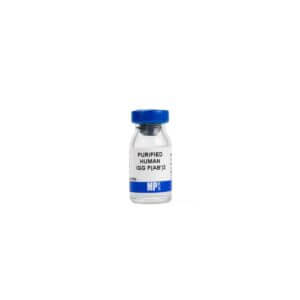
IgG f(ab’)2, human, purified
$267.31 Add to cart View Product DetailsLyophilized human IgG F(ab’)2 with buffers and salts.
-
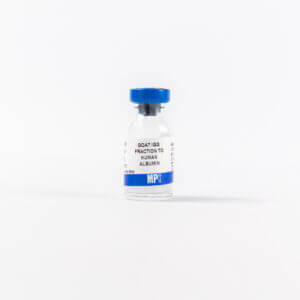
IgG Goat Anti-Human Albumin
$223.45 Add to cart View Product DetailsLyophilized goat IgG fraction to human albumin and buffer salts.
-
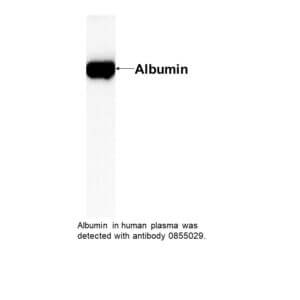
IgG Rabbit Anti-Human Albumin
$219.05 Add to cart View Product DetailsLyophilized rabbit IgG fraction to human albumin and buffer salts.
-
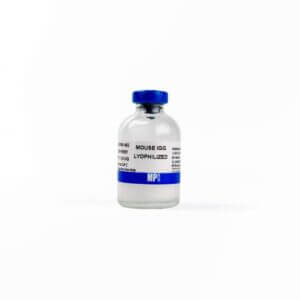
IgG, mouse, lyophilized
$533.83 Add to cart View Product DetailsMouse IgG purified from normal mouse serum.
-
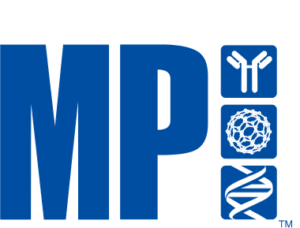
IgG, rabbit, fluorescein-conjugated
$353.57 Add to cart View Product DetailsIgG, rabbit, fluorescein-conjugated
-
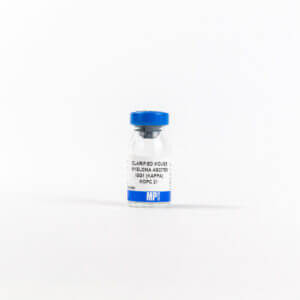
IgG1 (Kappa), Clone Mopc 21, mouse ascites
$541.56 Add to cart View Product Details[MOPC 21]
Ascites fluid, collected from Balb/c mice which carry plasmacytomas subcutaneously, are clarified by centrifugation and filtration. It is dialyzed, adjusted to yield at least 5 mg of immunoglobulin, then vialed and lyophilized. Clarified ascites are tested for immunoglobulin by immunoelectrophoresis using antisera specific for the particular type and isotype. Approximately 10% of the total protein is immunoglobulin (including trace levels of the host’s immunoglobulins), 80% is albumin, and 10% is complement and other proteins. -
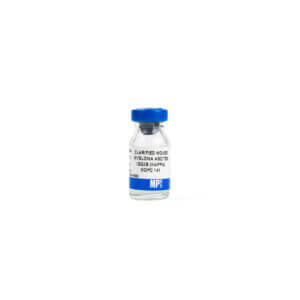
IgG2B (Kappa), mouse ascites
$299.38 Add to cart View Product DetailsLyophilized Clarified mouse myeloma ascites IgG2b (j) MOPC 195.
-
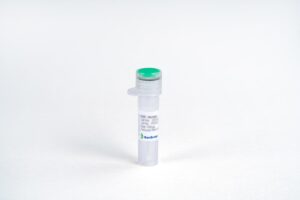
IHH, Human
$1,177.31 Add to cart View Product DetailsThe Indian Hedgehog protein (IHH) is one of three proteins in the mammalian hedgehog family, the others being desert hedgehog (DHH) and Sonic hedgehog (SHH). Hedgehog proteins are important signaling molecules during embryonic development and are highly conserved across species. Mouse and human IHH share 100% amino acid identity in the signaling domain, while mouse IHH and SHH share 90% amino acid identity in the N-terminal signaling domain. IHH mRNA expression is detected in fetal lung, gut, stomach, liver, kidney, pancreas and strongly in cartilage in growth regions of the developing bone. IHH has a specific role in bone growth and differentiation. In addition, IHH is involved in yolk sac vasculogenesis, having a central role in differentiation of epiblast cells into endothelial and red blood cells. IHH gene mutations cause the brachydactyly type A1 which is characterized by shortening or malformation of the phalanges and also the acrocapitofemoral dysplasia.
-

IHH, Human
$68.14 Add to cart View Product DetailsThe Indian Hedgehog protein (IHH) is one of three proteins in the mammalian hedgehog family, the others being desert hedgehog (DHH) and Sonic hedgehog (SHH). Hedgehog proteins are important signaling molecules during embryonic development and are highly conserved across species. Mouse and human IHH share 100% amino acid identity in the signaling domain, while mouse IHH and SHH share 90% amino acid identity in the N-terminal signaling domain. IHH mRNA expression is detected in fetal lung, gut, stomach, liver, kidney, pancreas and strongly in cartilage in growth regions of the developing bone. IHH has a specific role in bone growth and differentiation. In addition, IHH is involved in yolk sac vasculogenesis, having a central role in differentiation of epiblast cells into endothelial and red blood cells. IHH gene mutations cause the brachydactyly type A1 which is characterized by shortening or malformation of the phalanges and also the acrocapitofemoral dysplasia.
-

IHH, Human
$155.25 Add to cart View Product DetailsThe Indian Hedgehog protein (IHH) is one of three proteins in the mammalian hedgehog family, the others being desert hedgehog (DHH) and Sonic hedgehog (SHH). Hedgehog proteins are important signaling molecules during embryonic development and are highly conserved across species. Mouse and human IHH share 100% amino acid identity in the signaling domain, while mouse IHH and SHH share 90% amino acid identity in the N-terminal signaling domain. IHH mRNA expression is detected in fetal lung, gut, stomach, liver, kidney, pancreas and strongly in cartilage in growth regions of the developing bone. IHH has a specific role in bone growth and differentiation. In addition, IHH is involved in yolk sac vasculogenesis, having a central role in differentiation of epiblast cells into endothelial and red blood cells. IHH gene mutations cause the brachydactyly type A1 which is characterized by shortening or malformation of the phalanges and also the acrocapitofemoral dysplasia.
-

IL-1 RA, Human(HEK 293-expressed)
$737.44 Add to cart View Product DetailsIL-1 Receptor Antagonist, also known as IL-1RA, ICIL-1RA, IRAP and IL-1RN, is a member of the interleukin 1 cytokine family. It is expressed by monocytes, neutrophils, macrophages, epithelial cells and fibroblasts. IL-1RA inhibits the activity of both IL-1alpha and IL-1beta, and modulates a variety of IL-1 related immune and inflammatory responses. It inhibits the activity of IL-1 by binding to the receptor IL-1R1 and preventing its association with the coreceptor IL-1RAP for signaling. Clinical studies are being conducted to investigate the use of IL-1RA in the treatment of sepsis, rheumatoid arthritis and chronic myelogenous leukemia.
-

IL-1 RA, Human(HEK 293-expressed)
$43.13 Add to cart View Product DetailsIL-1 Receptor Antagonist, also known as IL-1RA, ICIL-1RA, IRAP and IL-1RN, is a member of the interleukin 1 cytokine family. It is expressed by monocytes, neutrophils, macrophages, epithelial cells and fibroblasts. IL-1RA inhibits the activity of both IL-1alpha and IL-1beta, and modulates a variety of IL-1 related immune and inflammatory responses. It inhibits the activity of IL-1 by binding to the receptor IL-1R1 and preventing its association with the coreceptor IL-1RAP for signaling. Clinical studies are being conducted to investigate the use of IL-1RA in the treatment of sepsis, rheumatoid arthritis and chronic myelogenous leukemia.
-

IL-1 RA, Human(HEK 293-expressed)
$76.76 Add to cart View Product DetailsIL-1 Receptor Antagonist, also known as IL-1RA, ICIL-1RA, IRAP and IL-1RN, is a member of the interleukin 1 cytokine family. It is expressed by monocytes, neutrophils, macrophages, epithelial cells and fibroblasts. IL-1RA inhibits the activity of both IL-1alpha and IL-1beta, and modulates a variety of IL-1 related immune and inflammatory responses. It inhibits the activity of IL-1 by binding to the receptor IL-1R1 and preventing its association with the coreceptor IL-1RAP for signaling. Clinical studies are being conducted to investigate the use of IL-1RA in the treatment of sepsis, rheumatoid arthritis and chronic myelogenous leukemia.
-

IL-10, Human(CHO-expressed)
$2,018.25 Add to cart View Product DetailsInterleukin-10 (IL-10), initially known as Cytokine Synthesis Inhibitory Factor (CSIF), belongs to the IL-10 family and shares more than 80% sequence homology with Epstein-Barr Virus protein BCRFI. It is produced by many immune cells, such as T-cells, macrophages, mast cells, and dendritic cells. It is usually secreted as a homodimer and, upon binding to its receptor, inhibits the synthesis of a number of cytokines, including IFN-gamma, IL-2, IL-3, TNF and GM-CSF produced by activated macrophages and Th2 cells. It also displays ability to suppress Antigen-Presenting Cell (APC) function. The net effect of Interleukin-10 appears to be inhibitory; however, stimulatory effects, such as stimulation of B cell maturation and antibody production, are also reported.
-

IL-10, Human(CHO-expressed)
$86.25 Add to cart View Product DetailsInterleukin-10 (IL-10), initially known as Cytokine Synthesis Inhibitory Factor (CSIF), belongs to the IL-10 family and shares more than 80% sequence homology with Epstein-Barr Virus protein BCRFI. It is produced by many immune cells, such as T-cells, macrophages, mast cells, and dendritic cells. It is usually secreted as a homodimer and, upon binding to its receptor, inhibits the synthesis of a number of cytokines, including IFN-gamma, IL-2, IL-3, TNF and GM-CSF produced by activated macrophages and Th2 cells. It also displays ability to suppress Antigen-Presenting Cell (APC) function. The net effect of Interleukin-10 appears to be inhibitory; however, stimulatory effects, such as stimulation of B cell maturation and antibody production, are also reported.
-

IL-10, Human(CHO-expressed)
$271.69 Add to cart View Product DetailsInterleukin-10 (IL-10), initially known as Cytokine Synthesis Inhibitory Factor (CSIF), belongs to the IL-10 family and shares more than 80% sequence homology with Epstein-Barr Virus protein BCRFI. It is produced by many immune cells, such as T-cells, macrophages, mast cells, and dendritic cells. It is usually secreted as a homodimer and, upon binding to its receptor, inhibits the synthesis of a number of cytokines, including IFN-gamma, IL-2, IL-3, TNF and GM-CSF produced by activated macrophages and Th2 cells. It also displays ability to suppress Antigen-Presenting Cell (APC) function. The net effect of Interleukin-10 appears to be inhibitory; however, stimulatory effects, such as stimulation of B cell maturation and antibody production, are also reported.
-

IL-10, Mouse(CHO-expressed)
$2,018.25 Add to cart View Product DetailsInterleukin-10 (IL-10), initially known as Cytokine Synthesis Inhibitory Factor (CSIF), belongs to the IL-10 family and shares more than 80% sequence homology with the Epstein-Barr Virus protein BCRFI. It is produced by many immune cells, such as T-cells, macrophages, mast cells and dendritic cells. It is usually secreted as a homodimer and, upon binding to its receptor, inhibits the synthesis of a number of cytokines, including IFN-gamma, IL-2, IL-3, TNF and GM-CSF, by activated macrophages and Th2 cells. It also displays the ability to suppress Antigen-Presenting Cell (APC) function. The net effect of Interleukin-10 appears to be inhibitory; however, stimulatory effects, such as stimulation of B cell maturation and antibody production, are also reported.
-

IL-10, Mouse(CHO-expressed)
$86.25 Add to cart View Product DetailsInterleukin-10 (IL-10), initially known as Cytokine Synthesis Inhibitory Factor (CSIF), belongs to the IL-10 family and shares more than 80% sequence homology with the Epstein-Barr Virus protein BCRFI. It is produced by many immune cells, such as T-cells, macrophages, mast cells and dendritic cells. It is usually secreted as a homodimer and, upon binding to its receptor, inhibits the synthesis of a number of cytokines, including IFN-gamma, IL-2, IL-3, TNF and GM-CSF, by activated macrophages and Th2 cells. It also displays the ability to suppress Antigen-Presenting Cell (APC) function. The net effect of Interleukin-10 appears to be inhibitory; however, stimulatory effects, such as stimulation of B cell maturation and antibody production, are also reported.
-

IL-10, Mouse(CHO-expressed)
$271.69 Add to cart View Product DetailsInterleukin-10 (IL-10), initially known as Cytokine Synthesis Inhibitory Factor (CSIF), belongs to the IL-10 family and shares more than 80% sequence homology with the Epstein-Barr Virus protein BCRFI. It is produced by many immune cells, such as T-cells, macrophages, mast cells and dendritic cells. It is usually secreted as a homodimer and, upon binding to its receptor, inhibits the synthesis of a number of cytokines, including IFN-gamma, IL-2, IL-3, TNF and GM-CSF, by activated macrophages and Th2 cells. It also displays the ability to suppress Antigen-Presenting Cell (APC) function. The net effect of Interleukin-10 appears to be inhibitory; however, stimulatory effects, such as stimulation of B cell maturation and antibody production, are also reported.
-

IL-10, Rat (CHO-expressed)
$2,018.25 Add to cart View Product DetailsInterleukin-10 (IL-10), initially known as Cytokine Synthesis Inhibitory Factor (CSIF), belongs to the IL-10 family and shares more than 80% sequence homology with the Epstein-Barr Virus protein BCRFI. It is produced by many immune cells, such as T-cells, macrophages, mast cells and dendritic cells. It is usually secreted as a homodimer and, upon binding to its receptor, inhibits the synthesis of a number of cytokines, including IFN-gamma, IL-2, IL-3, TNF and GM-CSF produced by activated macrophages and Th2 cells. It also displays the ability to suppress Antigen-Presenting Cell (APC) function. The net effect of Interleukin-10 appears to be inhibitory; however, stimulatory effects, such as stimulation of B cell maturation and antibody production, are also reported.
-

IL-10, Rat (CHO-expressed)
$86.25 Add to cart View Product DetailsInterleukin-10 (IL-10), initially known as Cytokine Synthesis Inhibitory Factor (CSIF), belongs to the IL-10 family and shares more than 80% sequence homology with the Epstein-Barr Virus protein BCRFI. It is produced by many immune cells, such as T-cells, macrophages, mast cells and dendritic cells. It is usually secreted as a homodimer and, upon binding to its receptor, inhibits the synthesis of a number of cytokines, including IFN-gamma, IL-2, IL-3, TNF and GM-CSF produced by activated macrophages and Th2 cells. It also displays the ability to suppress Antigen-Presenting Cell (APC) function. The net effect of Interleukin-10 appears to be inhibitory; however, stimulatory effects, such as stimulation of B cell maturation and antibody production, are also reported.
-

IL-10, Rat (CHO-expressed)
$271.69 Add to cart View Product DetailsInterleukin-10 (IL-10), initially known as Cytokine Synthesis Inhibitory Factor (CSIF), belongs to the IL-10 family and shares more than 80% sequence homology with the Epstein-Barr Virus protein BCRFI. It is produced by many immune cells, such as T-cells, macrophages, mast cells and dendritic cells. It is usually secreted as a homodimer and, upon binding to its receptor, inhibits the synthesis of a number of cytokines, including IFN-gamma, IL-2, IL-3, TNF and GM-CSF produced by activated macrophages and Th2 cells. It also displays the ability to suppress Antigen-Presenting Cell (APC) function. The net effect of Interleukin-10 appears to be inhibitory; however, stimulatory effects, such as stimulation of B cell maturation and antibody production, are also reported.
-
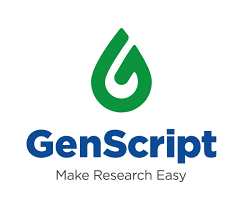
IL-11 Fc Chimera, Human
$2,328.75 Add to cart View Product DetailsInterleukin-11 is a pleiotropic cytokine that was originally detected in the conditioned medium ofan IL-1α-stimulated primate bone marrow stromal cell line (PU-34) as a mitogen for the IL-6-responsive mouse plasmacytoma cell line T11. IL-11 has multiple effects on both hematopoietic and non-hematopoietic cells. Many of the biological effects described for IL-11 overlap with those for IL-6. In vitro, IL-11 can synergize with IL-3, IL-4 and SCF to shorten the G0 period of early hematopoietic progenitors. IL-11 alsoenhances the IL-3-dependent megakaryocyte colony formation. IL-11 has been found to stimulate the T cell-dependent development of specific immunoglobulin-secreting B cells.
-

IL-11 Fc Chimera, Human
$99.19 Add to cart View Product DetailsInterleukin-11 is a pleiotropic cytokine that was originally detected in the conditioned medium ofan IL-1α-stimulated primate bone marrow stromal cell line (PU-34) as a mitogen for the IL-6-responsive mouse plasmacytoma cell line T11. IL-11 has multiple effects on both hematopoietic and non-hematopoietic cells. Many of the biological effects described for IL-11 overlap with those for IL-6. In vitro, IL-11 can synergize with IL-3, IL-4 and SCF to shorten the G0 period of early hematopoietic progenitors. IL-11 alsoenhances the IL-3-dependent megakaryocyte colony formation. IL-11 has been found to stimulate the T cell-dependent development of specific immunoglobulin-secreting B cells.
-

IL-11 Fc Chimera, Human
$319.13 Add to cart View Product DetailsInterleukin-11 is a pleiotropic cytokine that was originally detected in the conditioned medium ofan IL-1α-stimulated primate bone marrow stromal cell line (PU-34) as a mitogen for the IL-6-responsive mouse plasmacytoma cell line T11. IL-11 has multiple effects on both hematopoietic and non-hematopoietic cells. Many of the biological effects described for IL-11 overlap with those for IL-6. In vitro, IL-11 can synergize with IL-3, IL-4 and SCF to shorten the G0 period of early hematopoietic progenitors. IL-11 alsoenhances the IL-3-dependent megakaryocyte colony formation. IL-11 has been found to stimulate the T cell-dependent development of specific immunoglobulin-secreting B cells.
-

IL-11, Human(CHO-expressed)
$2,785.88 Add to cart View Product DetailsInterleukin-11 is a pleiotropic cytokine that was originally detected in the conditioned medium of an IL-1α-stimulated primate bone marrow stromal cell line (PU-34) as a mitogen for the IL-6-responsive mouse plasmacytoma cell line T11. IL-11 has multiple effects on both hematopoietic and non-hematopoietic cells. Many of the biological effects described for IL-11 overlap with those for IL-6. In vitro, IL-11 can synergize with IL-3, IL-4 and SCF to shorten the G0 period of early hematopoietic progenitors. IL-11 also enhances the IL-3-dependent megakaryocyte colony formation. IL-11 has been found to stimulate the T cell-dependent development of specific immunoglobulin-secreting B cells.
-

IL-11, Human(CHO-expressed)
$271.69 Add to cart View Product DetailsInterleukin-11 is a pleiotropic cytokine that was originally detected in the conditioned medium of an IL-1α-stimulated primate bone marrow stromal cell line (PU-34) as a mitogen for the IL-6-responsive mouse plasmacytoma cell line T11. IL-11 has multiple effects on both hematopoietic and non-hematopoietic cells. Many of the biological effects described for IL-11 overlap with those for IL-6. In vitro, IL-11 can synergize with IL-3, IL-4 and SCF to shorten the G0 period of early hematopoietic progenitors. IL-11 also enhances the IL-3-dependent megakaryocyte colony formation. IL-11 has been found to stimulate the T cell-dependent development of specific immunoglobulin-secreting B cells.
-

IL-11, Human(CHO-expressed)
$86.25 Add to cart View Product DetailsInterleukin-11 is a pleiotropic cytokine that was originally detected in the conditioned medium of an IL-1α-stimulated primate bone marrow stromal cell line (PU-34) as a mitogen for the IL-6-responsive mouse plasmacytoma cell line T11. IL-11 has multiple effects on both hematopoietic and non-hematopoietic cells. Many of the biological effects described for IL-11 overlap with those for IL-6. In vitro, IL-11 can synergize with IL-3, IL-4 and SCF to shorten the G0 period of early hematopoietic progenitors. IL-11 also enhances the IL-3-dependent megakaryocyte colony formation. IL-11 has been found to stimulate the T cell-dependent development of specific immunoglobulin-secreting B cells.
-

IL-11, Mouse(HEK 293-expressed)
$2,018.25 Add to cart View Product DetailsInterleukin-11 (IL-11) is a pleiotropic cytokine that was originally detected in the conditioned medium of an IL-1α-stimulated primate bone marrow stromal cell line (PU-34) as a mitogen for the IL-6-responsive mouse plasmacytoma cell line T11. IL-11 contains no cysteine residues or potential glycosylation sites. IL-11 has multiple effects on both hematopoietic and nonhematopoietic cells. Many of the biological effects described for IL-11 overlap those for IL-6. In vitro, IL-11 can synergize with IL-3, IL-4 and SCF to shorten the G0 period of early hematopoietic progenitors. IL-11 also enhances the IL-3-dependent megakaryocyte colony formation. IL-11 has been found to stimulate the T cell dependent development of specific immunoglobulin-secreting B cell.
-

IL-11, Mouse(HEK 293-expressed)
$86.25 Add to cart View Product DetailsInterleukin-11 (IL-11) is a pleiotropic cytokine that was originally detected in the conditioned medium of an IL-1α-stimulated primate bone marrow stromal cell line (PU-34) as a mitogen for the IL-6-responsive mouse plasmacytoma cell line T11. IL-11 contains no cysteine residues or potential glycosylation sites. IL-11 has multiple effects on both hematopoietic and nonhematopoietic cells. Many of the biological effects described for IL-11 overlap those for IL-6. In vitro, IL-11 can synergize with IL-3, IL-4 and SCF to shorten the G0 period of early hematopoietic progenitors. IL-11 also enhances the IL-3-dependent megakaryocyte colony formation. IL-11 has been found to stimulate the T cell dependent development of specific immunoglobulin-secreting B cell.
-

IL-11, Mouse(HEK 293-expressed)
$271.69 Add to cart View Product DetailsInterleukin-11 (IL-11) is a pleiotropic cytokine that was originally detected in the conditioned medium of an IL-1α-stimulated primate bone marrow stromal cell line (PU-34) as a mitogen for the IL-6-responsive mouse plasmacytoma cell line T11. IL-11 contains no cysteine residues or potential glycosylation sites. IL-11 has multiple effects on both hematopoietic and nonhematopoietic cells. Many of the biological effects described for IL-11 overlap those for IL-6. In vitro, IL-11 can synergize with IL-3, IL-4 and SCF to shorten the G0 period of early hematopoietic progenitors. IL-11 also enhances the IL-3-dependent megakaryocyte colony formation. IL-11 has been found to stimulate the T cell dependent development of specific immunoglobulin-secreting B cell.
-

IL-12, His, Rat
$3,070.50 Add to cart View Product DetailsInterleukin-12 (IL-12), also known as NKSF, TCMF, CLMF and TSF, is a heterodimeric cytokine composed of p35 and p40 subunits. It is produced by monocytes, macrophages, B cells and dendritic cells in response to bacterial lipopolysaccharides and intracellular pathogens. IL-12 signals through the IL-12 receptor complex, which is comprised of IL-12 Rβ1 and IL-12 Rβ2. IL-12 induces the proliferation and activation of hematopoietic stem cells, natural killer cells and T- cells. It is indispensible during the development of Th1 cells, leading to the production of IFN-gamma and IL-2.
-

IL-12, His, Rat
$86.25 Add to cart View Product DetailsInterleukin-12 (IL-12), also known as NKSF, TCMF, CLMF and TSF, is a heterodimeric cytokine composed of p35 and p40 subunits. It is produced by monocytes, macrophages, B cells and dendritic cells in response to bacterial lipopolysaccharides and intracellular pathogens. IL-12 signals through the IL-12 receptor complex, which is comprised of IL-12 Rβ1 and IL-12 Rβ2. IL-12 induces the proliferation and activation of hematopoietic stem cells, natural killer cells and T- cells. It is indispensible during the development of Th1 cells, leading to the production of IFN-gamma and IL-2.
-

IL-12, His, Rat
$306.19 Add to cart View Product DetailsInterleukin-12 (IL-12), also known as NKSF, TCMF, CLMF and TSF, is a heterodimeric cytokine composed of p35 and p40 subunits. It is produced by monocytes, macrophages, B cells and dendritic cells in response to bacterial lipopolysaccharides and intracellular pathogens. IL-12 signals through the IL-12 receptor complex, which is comprised of IL-12 Rβ1 and IL-12 Rβ2. IL-12 induces the proliferation and activation of hematopoietic stem cells, natural killer cells and T- cells. It is indispensible during the development of Th1 cells, leading to the production of IFN-gamma and IL-2.
-

IL-12, Human(HEK 293-expressed)
$2,785.88 Add to cart View Product DetailsInterleukin 12 (IL-12), also known as natural killer cell stimulatory factor (NKSF) or cytotoxic lymphocyte maturation factor (CLMF), is a pleiotropic cytokine originally identified in the medium of activated human B lymphoblastoid cell lines. The p40 subunit of IL-12 has been shown to have extensive amino acid sequence homology to the extracellular domain of the human IL-6 receptor while the p35 subunit shows distant but significant sequence similarity to IL-6, G-CSF, and chicken MGF. These observations have led to the suggestion that IL-12 might have evolved from a cytokine/soluble receptor complex. Human and mouse IL-12 share 70% and 60% amino acid sequence homology in their p40 and p35 subunits, respectively. IL-12 apparently shows species specificity with human IL-12 reportedly showing minimal activity in the mouse system.
-

IL-12, Human(HEK 293-expressed)
$392.44 Add to cart View Product DetailsInterleukin 12 (IL-12), also known as natural killer cell stimulatory factor (NKSF) or cytotoxic lymphocyte maturation factor (CLMF), is a pleiotropic cytokine originally identified in the medium of activated human B lymphoblastoid cell lines. The p40 subunit of IL-12 has been shown to have extensive amino acid sequence homology to the extracellular domain of the human IL-6 receptor while the p35 subunit shows distant but significant sequence similarity to IL-6, G-CSF, and chicken MGF. These observations have led to the suggestion that IL-12 might have evolved from a cytokine/soluble receptor complex. Human and mouse IL-12 share 70% and 60% amino acid sequence homology in their p40 and p35 subunits, respectively. IL-12 apparently shows species specificity with human IL-12 reportedly showing minimal activity in the mouse system.
-

IL-12, Human(HEK 293-expressed)
$86.25 Add to cart View Product DetailsInterleukin 12 (IL-12), also known as natural killer cell stimulatory factor (NKSF) or cytotoxic lymphocyte maturation factor (CLMF), is a pleiotropic cytokine originally identified in the medium of activated human B lymphoblastoid cell lines. The p40 subunit of IL-12 has been shown to have extensive amino acid sequence homology to the extracellular domain of the human IL-6 receptor while the p35 subunit shows distant but significant sequence similarity to IL-6, G-CSF, and chicken MGF. These observations have led to the suggestion that IL-12 might have evolved from a cytokine/soluble receptor complex. Human and mouse IL-12 share 70% and 60% amino acid sequence homology in their p40 and p35 subunits, respectively. IL-12 apparently shows species specificity with human IL-12 reportedly showing minimal activity in the mouse system.
-

IL-12, Mouse
$3,070.50 Add to cart View Product DetailsInterleukin-12 (IL-12), also known as NKSF, TCMF, CLMF and TSF, is a heterodimeric cytokine composed of p35 and p40 subunits. It is produced by monocytes, macrophages, B cells and dendritic cells in response to bacterial lipopolysaccharides and intracellular pathogens. IL-12 signals throughtheIL-12 receptor complex, which is comprised of IL-12 Rβ1 and IL-12 Rβ2. IL-12 induces the proliferation and activation of hematopoietic stem cells, natural killer cells and T- cells. It is indispensible during the development of Th1 cells, leading to the production of IFN-gamma and IL-2.
-

IL-12, Mouse
$149.21 Add to cart View Product DetailsInterleukin-12 (IL-12), also known as NKSF, TCMF, CLMF and TSF, is a heterodimeric cytokine composed of p35 and p40 subunits. It is produced by monocytes, macrophages, B cells and dendritic cells in response to bacterial lipopolysaccharides and intracellular pathogens. IL-12 signals throughtheIL-12 receptor complex, which is comprised of IL-12 Rβ1 and IL-12 Rβ2. IL-12 induces the proliferation and activation of hematopoietic stem cells, natural killer cells and T- cells. It is indispensible during the development of Th1 cells, leading to the production of IFN-gamma and IL-2.






